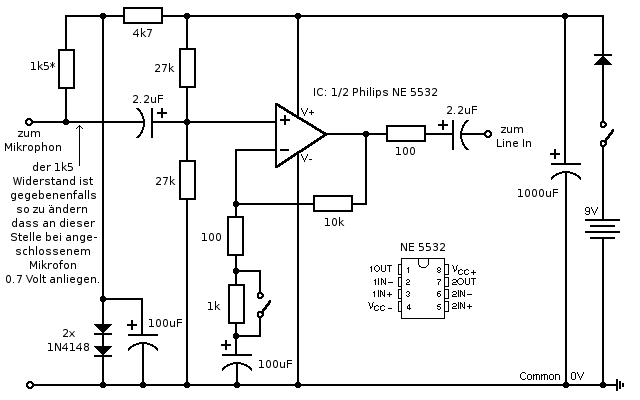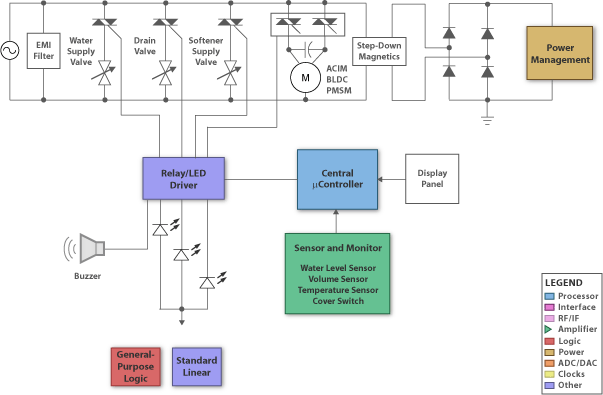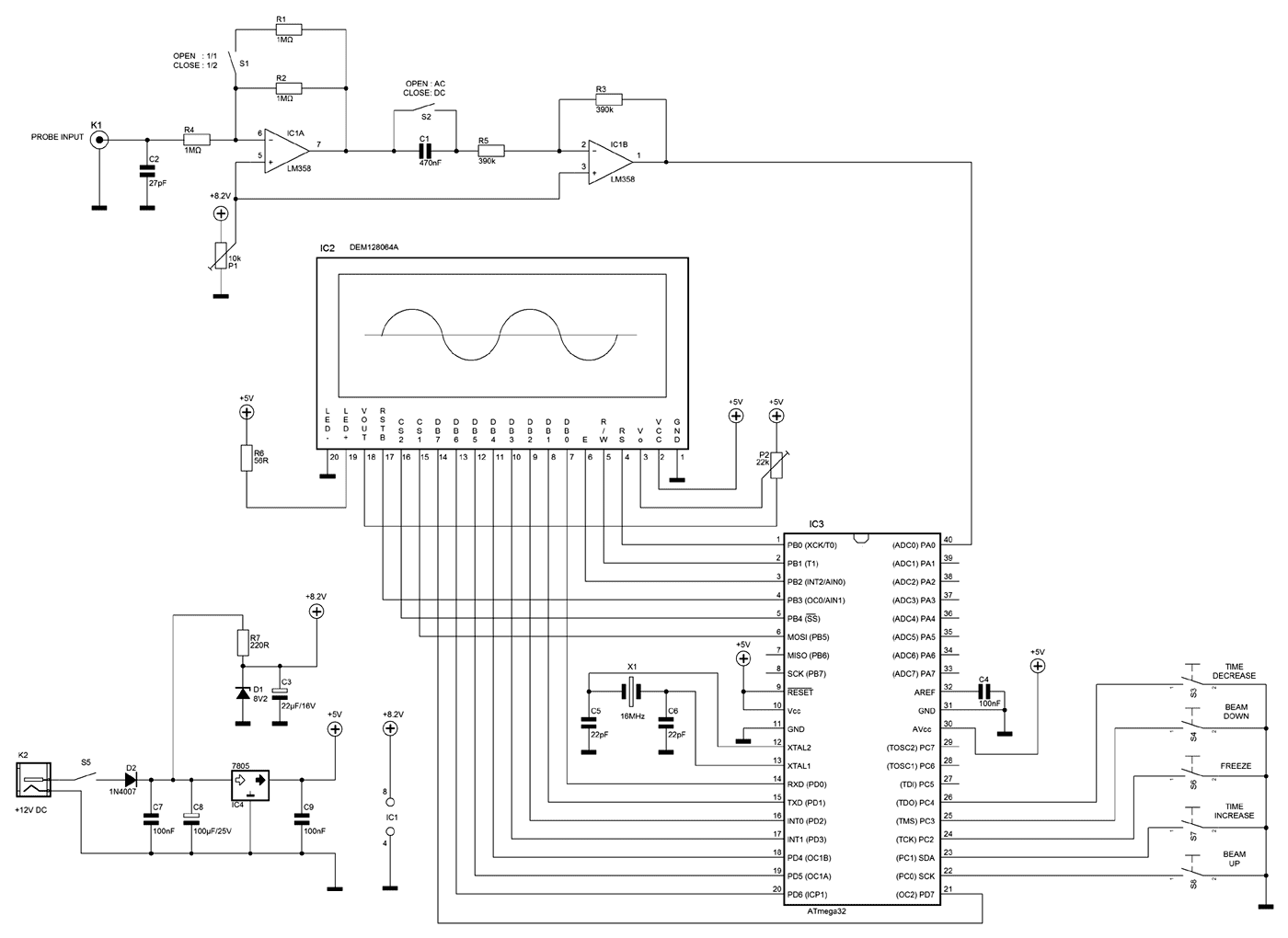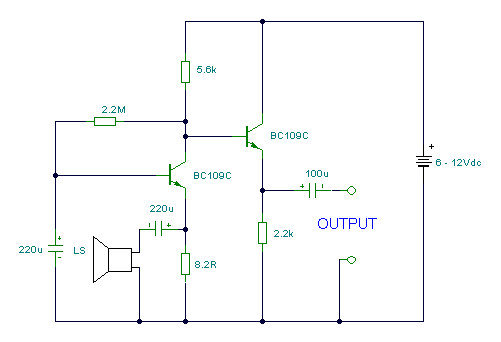
electret Mic preamp

Greetings to everyone. I am new to this forum, although I have previously used it to create a DIY projector. My knowledge of electronics is limited, and I am currently reading books to improve my understanding.
The creation of a DIY projector involves several key components and considerations that are essential for successful implementation. A basic projector design typically includes a light source, an optical lens system, a display medium, and a housing structure to assemble these components securely.
The light source can be an LED or a high-intensity lamp, which provides the illumination necessary for projecting an image. The choice of light source affects the brightness and efficiency of the projector.
Next, an optical lens system is crucial for focusing and enlarging the image. This system often consists of multiple lenses arranged in a specific configuration to ensure that the projected image is clear and sharp. The focal length and diameter of the lenses must be chosen based on the desired projection size and distance.
The display medium can be an LCD panel, DLP chip, or other types of screens that can be illuminated by the light source. The resolution and size of the display medium will influence the overall quality of the projected image.
Finally, the housing structure must be designed to accommodate all components while allowing for adequate heat dissipation and airflow. This structure should also include adjustable mounts for the lens and display medium to facilitate alignment and focus adjustments.
In addition to these components, it is important to consider the electrical circuitry required to power the light source and control the display. A basic circuit may include a power supply, switches, and potentially a microcontroller for advanced features such as remote control or image processing.
Overall, designing and building a DIY projector requires careful planning and understanding of both optical and electronic principles. Continued study and experimentation will enhance knowledge and skills in electronics, leading to more successful projects in the future.Hi to all I`m new in the forum or better I have used it some ago to make a diy projector!I do not know electronics so much (I`m reading books and.. 🔗 External reference
The creation of a DIY projector involves several key components and considerations that are essential for successful implementation. A basic projector design typically includes a light source, an optical lens system, a display medium, and a housing structure to assemble these components securely.
The light source can be an LED or a high-intensity lamp, which provides the illumination necessary for projecting an image. The choice of light source affects the brightness and efficiency of the projector.
Next, an optical lens system is crucial for focusing and enlarging the image. This system often consists of multiple lenses arranged in a specific configuration to ensure that the projected image is clear and sharp. The focal length and diameter of the lenses must be chosen based on the desired projection size and distance.
The display medium can be an LCD panel, DLP chip, or other types of screens that can be illuminated by the light source. The resolution and size of the display medium will influence the overall quality of the projected image.
Finally, the housing structure must be designed to accommodate all components while allowing for adequate heat dissipation and airflow. This structure should also include adjustable mounts for the lens and display medium to facilitate alignment and focus adjustments.
In addition to these components, it is important to consider the electrical circuitry required to power the light source and control the display. A basic circuit may include a power supply, switches, and potentially a microcontroller for advanced features such as remote control or image processing.
Overall, designing and building a DIY projector requires careful planning and understanding of both optical and electronic principles. Continued study and experimentation will enhance knowledge and skills in electronics, leading to more successful projects in the future.Hi to all I`m new in the forum or better I have used it some ago to make a diy projector!I do not know electronics so much (I`m reading books and.. 🔗 External reference





